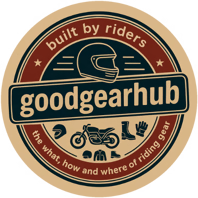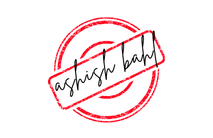
In This Blog
- When did it start, influences, icons and more
- Motorcycling culture in USA
- Be part of Born to Ride
Born to Ride – The American Love Affair with Motorcycles
In America, bikes go far beyond being mere machines—they’re living legends on wheels. They embody a fierce defiance, a craving for freedom, and sometimes even a sense of identity that rebels against the ordinary. Out on endless highways and under vast open skies, riding feels like a direct ticket to personal liberty—one you only get when the wind slaps your face and the horizon seems to stretch forever.
Sometimes you see chrome-crusted cruisers storming through Sturgis; at other times, minimalist café racers wind their way through hidden urban lanes. The scene is vibrant and variegated, pulsing with passion and deeply interlaced with what it means to be American. This story dips into the rich past and shifting subcultures of motorcycling, gives a nod to icons like Steve McQueen, and reminds us how the spirit of two wheels continues to shape lives.
The Origin Story – A Brief History of Motorcycling in America
Biking in this country got its start in the early 1900s, thanks to names such as Harley-Davidson (established 1903) and Indian Motorcycle (around 1901). Initially, they served as practical transport, but soon races, law enforcement, and wartime needs began to transform them into symbols of speed and attitude.
During both World Wars, motorcycles proved indispensable for U.S. forces, and when the fighting subsided, returning veterans often picked up a taste for that two-wheeled freedom. In most cases, the post-war era sparked the formation of riding clubs and a custom culture that prioritized style and sensation over mere practicality.
The 1950s and ’60s then cemented motorcycling as a way of life. Outlaw groups like the Hells Angels surfaced, giving off a defiant, rough-and-ready vibe, while films—take The Wild One (1953) with Marlon Brando, for example—reshaped the biker image into one of raw rebellion. Generally speaking, these years were less about function and more about crafting a living legend of personal liberty.
Steve McQueen and the Motorcycling Mythos
Marlon Brando might have hinted at the biker spirit, but Steve McQueen really brought the soul to the ride. Known affectionately as the “King of Cool,” McQueen wasn’t just acting like a rider—he was one through and through. An avid competitor, he dove into motocross, desert races, and even took part in the International Six Days Trial under the quirky alias “Harvey Mushman.”
In The Great Escape (1963), McQueen did many of his own stunts, including that unforgettable chase on a Triumph made to look, at least momentarily, like a German machine. That daring leap over a barbed-wire fence became almost mythic and got millions hooked on the idea of riding. Even though the final jump was ultimately pulled off by stuntman Bud Ekins, the electric spirit of that moment undoubtedly belonged to McQueen.
He managed to wedded the glitz of Hollywood with the raw hunger of the open road. From the Triumph in that iconic chaser scene to his rugged Husqvarna dirt bikes kicking up desert dust, his presense (yes, a tiny slip there) lent a realness that many felt was missing from a world too often polished by the silver screen. His signature style—Barbour jackets, classic aviators, and occasionally an open-faced helmet—established a tone that resonated through generations.
The Subcultures That Define American Motorcycling
Motorcycling in the U.S. isn’t just a single lifestyle; it sprawls into a broad mix of subcultures, each carrying its own rituals, rides, and ideas of freedom. Let’s wander through some of the distinct tribes that light up our roads:
Cruiser Culture
Here lies the very heart of American riding. Picture long wheelbases, low seats, heavy chrome finishes, and that deep Harley-Davidson rumble echoing along quiet backroads. Cruisers cherish tradition, comfort, and the reliable torque of their machines. Clubs, patch exchanges, and massive gatherings like Sturgis all play into a sense of journey and brotherhood.
Sportbike Scene
This is the realm of high revs and razor-sharp turns, where riders chase an almost addictive burst of adrenaline—whether tearing through city streets or carving up a racetrack. Enthusiasts lean toward bikes like the Yamaha R1 or Kawasaki ZX-10R, often tweaking them for both performance and flash. This scene skews younger and tends to mix the influences of legendary racers with a touch of edgy urban flair.
Adventure & Dual-Sport Riders
Finally, there are the explorers. These are the riders who set off from the frosty roads of Alaska and head as far south as Argentina, undaunted by river crossings or steep mountain climbs. For them, every ride is as much an adventure as it is a quest for new experiences—the open road serving as both the means and the end of discovery. These bikes aren’t built for the timid – think BMW GS, KTM Adventure, or Honda Africa Twin – and they scream one message: the further you head out, the fuller your ride becomes. It’s as if the whole idea is fueled by raw grit, the right gear, and the thrill of globe-trotting.
Café racers and custom builds.
They started out with a hint of British rebellion but later found life in American garages. Instead of following factory blueprints, these rides are stripped down, old-school, and usually assembled with a good dose of DIY spirit. Their look is a personal stamp; a kind of repeated testament to creativity, craftsmanship, and a deep, almost untamed love for design.
The electric, new-age crowd.
With rides like the Harley-Davidson LiveWire and Zero Motorcycles popping up in urban streets, a fresh, tech-savvy, eco-minded breed of rider is emerging. It’s a scene that’s still in its early days, generally speaking, but it’s rapidly intersecting with trends in green living and fresh innovation.
America, it seems, has a near-religious love affair with the open road.
There’s nothing quite like those legendary routes that fuel every rider’s daydreams. Route 66, often called the Mother Road, takes you on a historic journey from Chicago to Santa Monica; the Blue Ridge Parkway winds through the Appalachian Highlands like a constant daydream; and the Pacific Coast Highway, stretching from Malibu to Big Sur, treats riders to a refreshing mix of ocean spray and breathtaking vistas. Not to mention the infamous Tail of the Dragon – 318 curves packed into 11 miles – a real test for those who live for the corner. These aren’t mere endpoints; they become personal pilgrimages, each ride carving out a new chapter in the never-ending American motorcycle saga.
Then there are the rallies – the heartbeat of this entire culture. From huge gatherings to more off-the-beaten-path meetups, these events are where stories get swapped, chrome gets polished (yes, repeatedly), and engines join in a roaring chorus. Sturgis Motorcycle Rally in South Dakota, a legendary mecca since 1938, effortlessly leads the pack. In Florida, Daytona Bike Week blends speed with spectacle, adding races, shows and even coastal rides into the mix. California’s Born-Free event is a haven for vintage buffs and custom builders, while The Distinguished Gentleman’s Ride – a global charity affair – mixes style with a gentle nod to men’s health. In these moments, even that solitary rider finds themselves a part of something much, much bigger.Motorcycles have always thundered through pop culture, if you ask anyone. Whether through film or music, two-wheeled machines have long stood as icons of unbridled freedom and raw edge. Marlon Brando in The Wild One basically set the outlaw standard; then Dennis Hopper and Peter Fonda, in Easy Rider, turned the ride into a kind of wild, almost psychedelic pilgrimage; and of course, Steve McQueen brought a cool, gritty credibility that still echoes today. In songs—from Bruce Springsteen’s Born to Run to the sonic pulses of Prince and Metallica—the motorcycle continues to symbolize that unchained, restless desire. Even today, pictures of bikes actively fuel trends in art, fashion, and branding, always reminding us that these machines are timeless symbols of independence.But what does it really mean to ride? At its simplest, American motorcycling is about defining yourself. Whether you’re a weekend cruiser or a road warrior every day, there comes a moment when riding peels away the everyday noise—job titles, overflowing inboxes, and polished social profiles fade out, leaving you raw and present. You lean into every twist, feel every rumble, and make split-second choices that remind you that life isn’t something to be passively watched—it’s something you actively live through.
goodgearhub wrap
When you step back and look at it all, American motorcycling has shifted and grown. It’s moved from its humble, utilitarian roots to an outlaw symbol, from a local craze to a global phenomenon. Yet, at its core, the ride remains unchanged: a relentless hunger for freedom, a deep sense of individuality, and an ever-present desire for connection. In every throaty Harley rumble, every assertive Triumph growl, and even in the soft hum of an electric motor, there’s a quiet echo of what legends like Steve McQueen or Marlon Brando felt—a burning need to break free, to chase the unknown, and to truly live deliberately. From dusty desert trails to sunlit coastal roads, that spirit is alive, imperfect, and endlessly compelling. Mountain passes, neon city nights, and those offbeat small-town diners—each piece tells a story of the American rider’s core. There’s something raw and unhinged here, a kind of pulse that refuses to be tamed. Wild. Unbound. Just born to hit the road.

